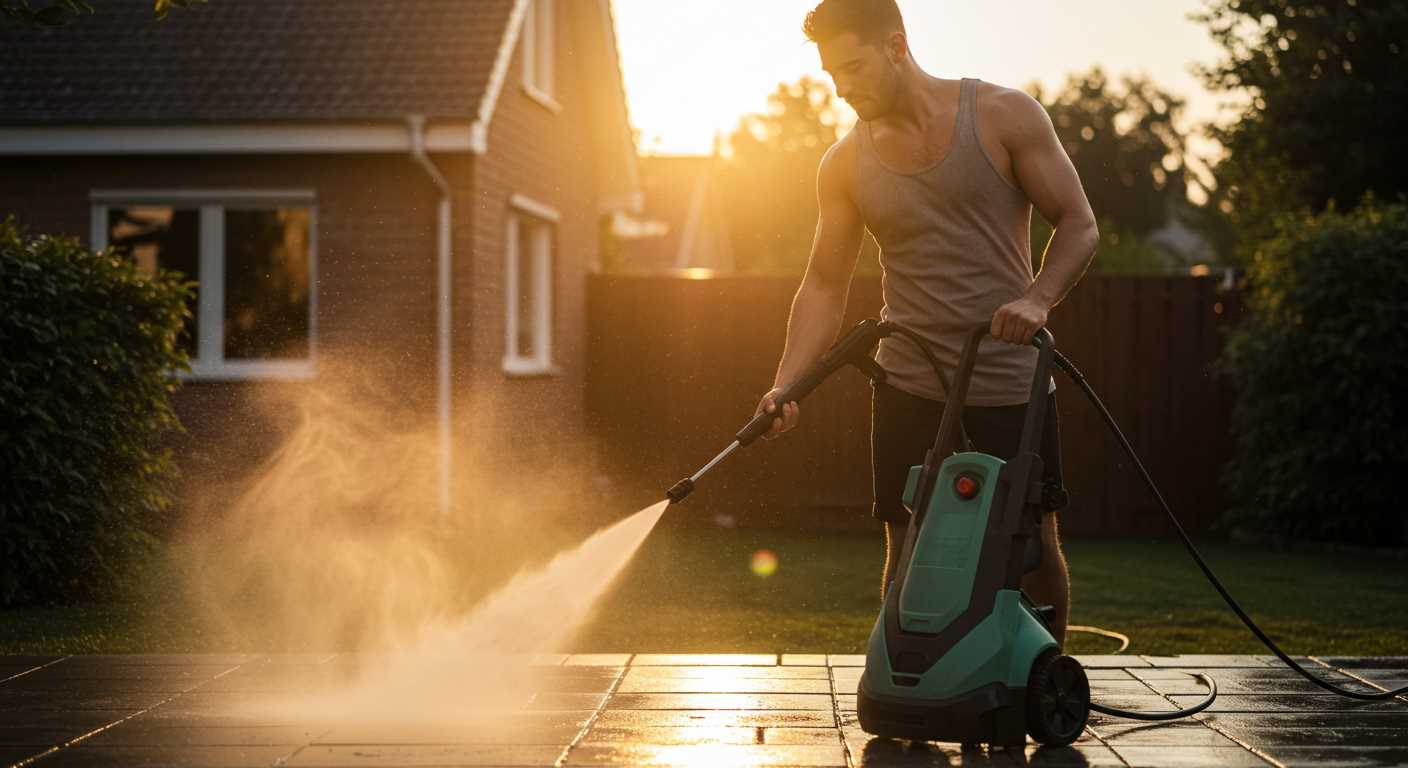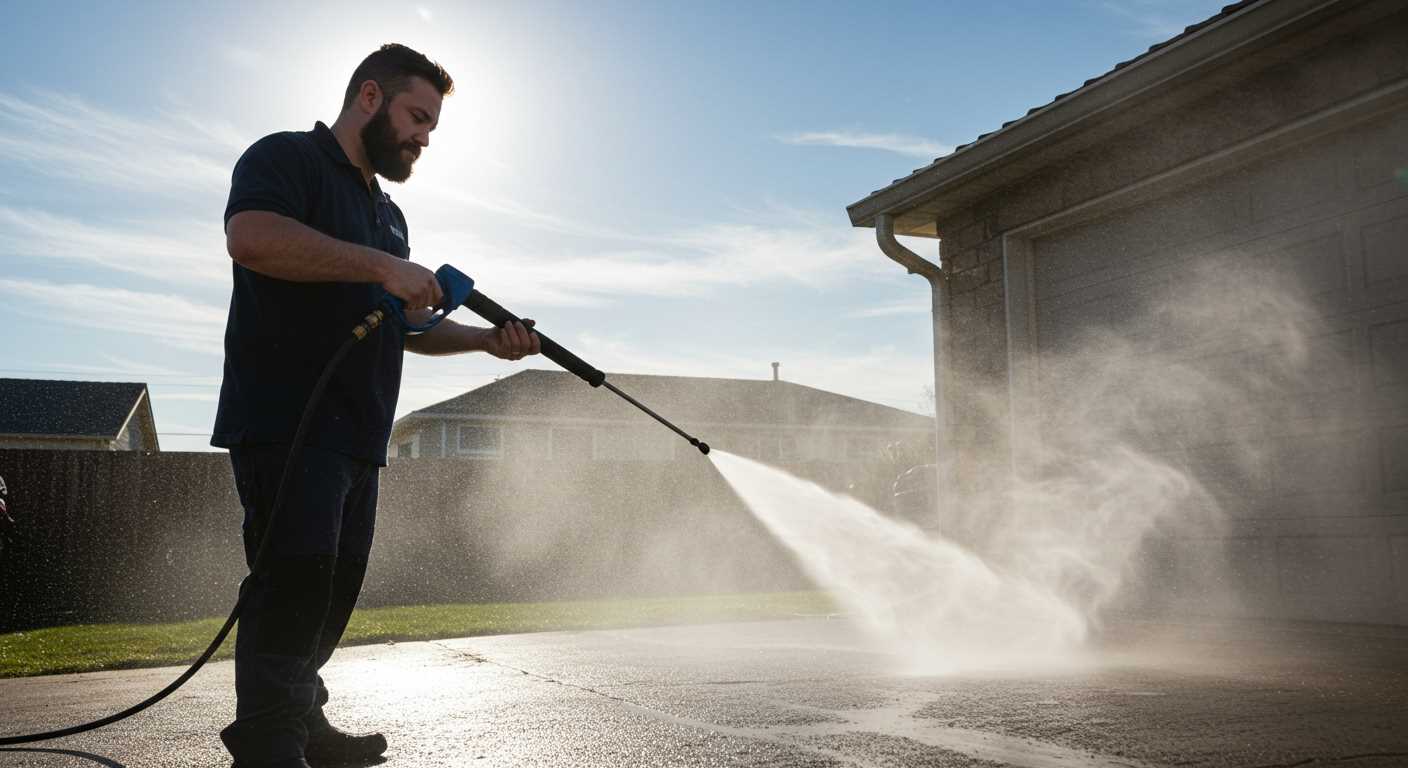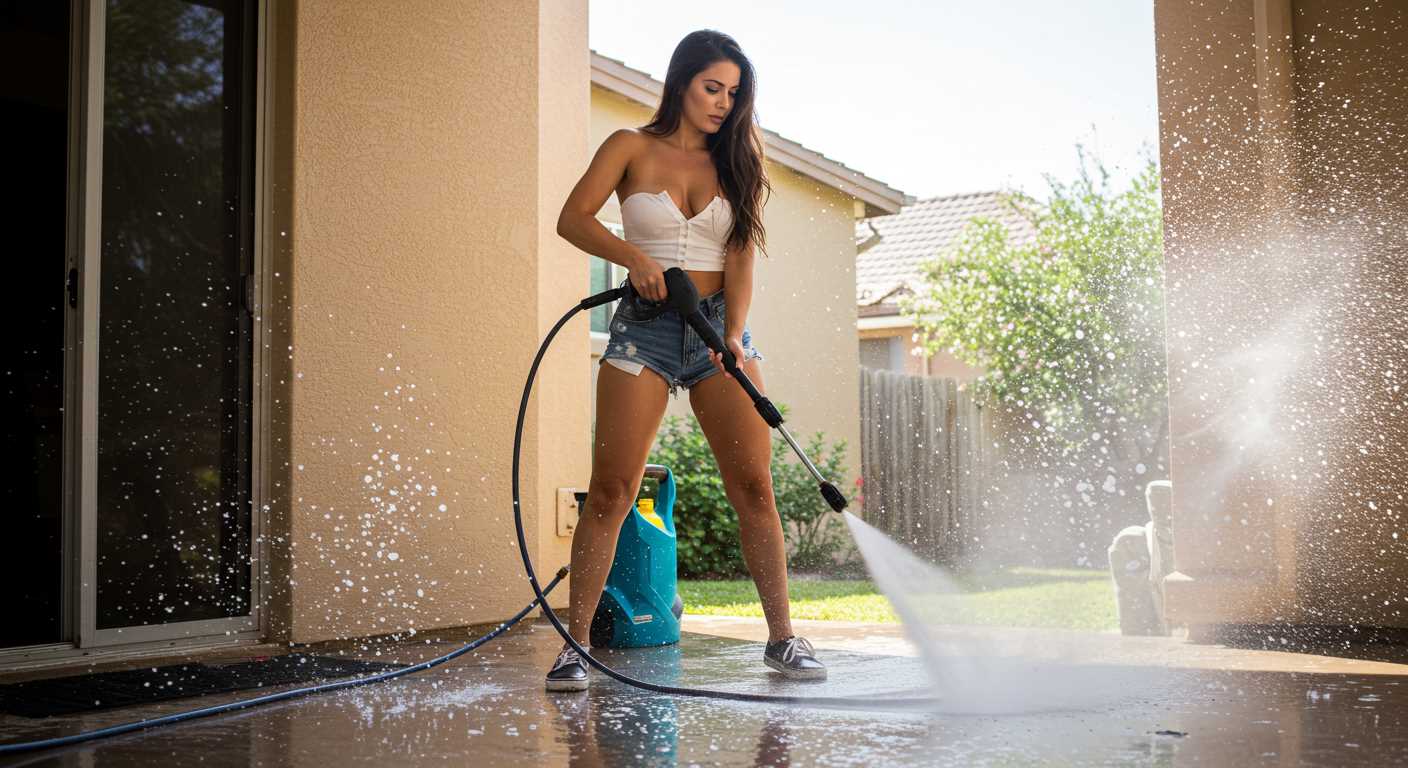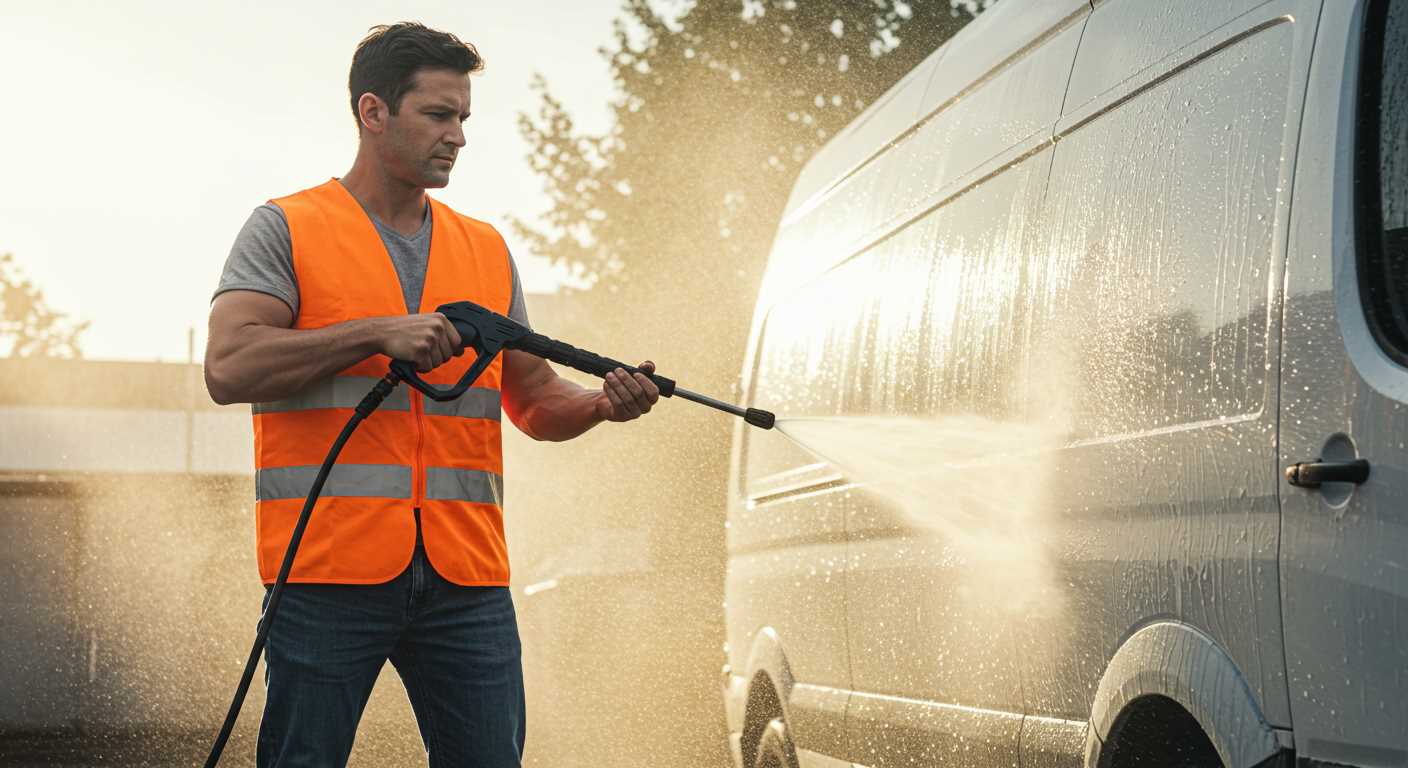

If you’re facing frequent shutdowns with your cleaning device, consider checking the water supply. Insufficient water can trigger a built-in safety mechanism to prevent damage. Ensure that the hose is fully extended and free from kinks, and make sure that you have a strong water flow before starting the machine.
Another aspect to examine is the power source. An unstable electrical supply, such as loose connections or an inadequate extension cord, can lead to unexpected shutdowns. Verify that the cord is rated for the device’s required wattage and inspect for any damage.
Regular maintenance of the unit is essential. Clogged filters, inlet screens, or nozzles can disrupt the fluid flow and result in overheating. Clean these components regularly to ensure smooth operation.
Finally, inspect the trigger gun and hose assembly. Faulty connections or leaks can contribute to a lack of pressure and lead the unit to shut down. Tighten any loose fittings and replace damaged parts to keep your equipment functioning properly.
Common causes for automatic shut-off in pressure cleaners
Insufficient water supply can lead to an automatic shutdown. Always ensure a proper flow and pressure from the water source. Check hoses for kinks and ensure filters are clean.
Overheating is another frequent culprit. Most models have built-in thermal protection. If your unit shuts off after prolonged use, allow it to cool down before attempting to restart it. Frequent and prolonged usage without breaks can cause this issue.
Faulty components

Damaged or worn-out internal parts, such as the motor or pump, may cause operational interruptions. Inspecting these components regularly for wear and replacing them when necessary can enhance longevity.
Electrical issues
Examine connections for loose wires or corroded terminals. Voltage fluctuations can disrupt the functioning of your device. Make sure the power supply is stable and conforms to the manufacturer’s specifications.
How to check for overheating issues in your pressure cleaner

First, ensure the device has not been in continuous use for an extended period. Most units have a thermal overload switch, which will activate if the motor overheats. If this occurs, allow the equipment to cool down for at least 30 minutes before restarting.
Inspect the intake filter and water supply. A clogged filter can restrict water flow, causing the motor to work harder and potentially overheat. Clean or replace the filter as needed to ensure optimal operation.
Examine the electrical components, including the power cord for damage or wear. A damaged cord may lead to inadequate power supply and increased heat generation within the motor. Replace any faulty components immediately.
Make sure the pump is properly lubricated. Lack of lubrication can create additional friction and heat, leading to overheating of the motor. Consult your user manual for specific lubrication guidelines and frequencies.
Check the water temperature. Using hot water instead of cold can also result in overheating issues. Always match the water temperature to the manufacturer’s recommendations to avoid straining the pump and motor.
Finally, observe the operation during usage. If the motor sounds different or is running longer than usual, this may indicate an overheating problem. Addressing any unusual behaviour promptly can prevent further damage.
Understanding motor and pump interactions in your device

To ensure optimal performance, regularly inspect the coupling between the motor and pump. Misalignment or wear can inhibit efficiency, causing the unit to shut down unexpectedly. Check for any unusual noises during operation; they often indicate issues in the gear mechanisms linking these components.
The motor’s power supply needs to be consistent. Voltage fluctuations can lead to insufficient power delivery, affecting performance and causing premature shut-offs. Measure the voltage at the outlet to ensure it meets the operational requirements, usually specified in the manual.
Water supply ensures the pump operates correctly. Insufficient flow can result in overheating, which may trigger internal thermal protection mechanisms, leading to shut-offs. Verify the inlet filter is clean and free from blockages to maintain optimal water flow into the pump.
Examine the pump for signs of wear or damage. The seals, in particular, are crucial. Damaged seals can result in leaks and reduced pressure, ultimately straining the motor and leading to automatic shutdowns. Regular maintenance and replacement of seals can prevent this issue.
Finally, keep an eye on the operating temperature. Components should not exceed the manufacturer’s specified limits. Install a thermometer to monitor temperature. If overheating persists, consider using a cooling system or ensuring appropriate working conditions to extend the lifespan of both the motor and pump.
Checking the Power Supply and Electrical Connections
Ensure that the outlet is functioning correctly by testing it with another device. If that device works, proceed to inspect the cord and plug of your machine. Look for visible damage such as fraying, cuts, or burns. Any defects in the power supply line can interrupt energy flow, causing abrupt shut-offs.
Next, check whether the plug fits securely into the socket. A loose connection may lead to fluctuations in power, resulting in your equipment shutting down unexpectedly. If using an extension cord, confirm that it is rated for the wattage required by your model. An inadequate extension may not provide sufficient current, creating issues during operation.
If possible, use a multimeter to measure the voltage at the outlet. Ensure it matches the standard required by the machine. A voltage drop can indicate an issue further upstream in your electrical system. If readings are consistently low, consider consulting an electrician.
Inspect all electrical connections within the appliance, particularly at the motor and switch. Loose or corroded contacts can hinder performance. Gently tighten any loose connections and clean off any rust or corrosion with suitable electrical contact cleaner.
Regular maintenance of your equipment includes visual inspections of electrical components. By addressing these potential power-related issues, you can enhance reliability and prolong the lifespan of your machine.
Maintenance Tips to Prevent Shutdowns While Operating
Regular inspections of hoses and fittings are essential. Look for any signs of wear, leaks, or kinks that could impede water flow. Replace damaged components promptly.
- Flush the system after each use to remove debris and prevent build-up.
- Inspect and clean the inlet filter often; a clogged filter can cause reduced performance and overheating.
- Ensure that the nozzle is compatible with your model and free from blockages.
Routine lubrication of moving parts helps maintain performance. Follow the manufacturer’s guidelines for the appropriate lubricant.
- Check the motor’s ventilation regularly to avoid overheating.
- Keep the unit on a flat, stable surface to prevent unnecessary strain on components.
Verify that power cords are in good condition, with no fraying or damage, and avoid using extension cords that might not support the necessary voltage.
Schedule an annual professional service to spot potential issues before they lead to shutdowns. This proactive step extends the longevity of the unit.
When to Seek Professional Repair Services for Your Pressure Cleaner
Consider calling in a technician if the unit frequently shuts off despite following maintenance guidelines. Persistent shutdowns suggest underlying issues, and delaying repairs can lead to extensive damage.
Signs Indicating Professional Assistance is Required

Here are clear signs you should engage a specialist:
| Indicator | Action |
|---|---|
| Repeated Shutdowns | Contact a repair technician for diagnosis. |
| Unusual Sounds or Vibration | Seek immediate assistance; this could indicate motor or pump failure. |
| Water Leaks | Professional evaluation is necessary to prevent further damage. |
| Power Fluctuations | Check the power source first, then consult an expert if the issue persists. |
| Burning Smell | Turn off the unit and schedule a repair; this indicates overheating or electrical problems. |
Expert Evaluation Benefits
Investing in professional repairs ensures that the issue is accurately identified and effectively resolved. Technicians have access to specialized tools and knowledge to restore functionality and safety to your cleaning equipment. Prompt professional intervention can save you time and money in the long run compared to DIY attempts that may not address the root cause.
FAQ:
What are the common reasons why my electric pressure washer keeps turning off?
There are several potential reasons for an electric pressure washer to unexpectedly shut down. First, overheating is a common issue. If the machine operates for too long without a break, the motor can overheat, triggering a safety switch that turns the unit off. Another reason could be a blockage in the water inlet or outlet, which can cause the pump to work harder than necessary, leading to shutdown. Additionally, a faulty power source or extension cord can cause fluctuations in power, resulting in the washer turning off. It’s also worth checking the pressure switch, as a malfunctioning switch can cut the power intermittently.
How can I prevent my electric pressure washer from turning off due to overheating?
To prevent overheating, it’s advisable to take regular breaks while using the pressure washer. A good rule of thumb is to operate the machine for about 15-20 minutes and then let it cool for 5-10 minutes. This allows the motor to cool down and reduces the risk of overheating. Additionally, ensure that the water supply is adequate and flowing freely to avoid excessive strain on the pump. Keeping the pressure washer clean and well-maintained can also help it operate more efficiently, reducing the likelihood of overheating.
What should I check if my pressure washer turns off and won’t start again?
If your electric pressure washer turns off and won’t restart, begin by checking the power source. Ensure that the outlet is functioning correctly by testing it with another electrical device. If the outlet is fine, inspect the extension cord for any damage or loose connections. Next, make sure the water supply is connected and turned on, as many models require water for the pump to operate. Also, check the reset button, if equipped. If the problem persists, there may be an internal issue, such as a faulty pressure switch or thermal overload protection, in which case professional servicing may be required.
Could using the wrong detergent cause my electric pressure washer to turn off?
Yes, using the wrong type of detergent can potentially lead to operational issues, including the pressure washer shutting down. Some detergents can cause foam buildup, which may overwork the pump and trigger an automatic shut-off to prevent damage. It’s essential to use detergents specifically designed for pressure washers, following the manufacturer’s guidelines regarding dilution and type. This helps maintain the unit’s efficiency and reduces the risk of malfunctions.
Is it normal for my electric pressure washer to turn off after a short period of operation?
It’s not uncommon for pressure washers to shut off, especially if they have a built-in safety feature to protect against overheating or pressure fluctuations. If this happens frequently after short bursts of use, it may indicate a problem, such as insufficient water supply, a blockage, or an electrical issue. While occasional shutdowns may be normal, frequent occurrences suggest that something may need to be addressed, such as ensuring the unit is cleaned, serviced, or checked for faults.








